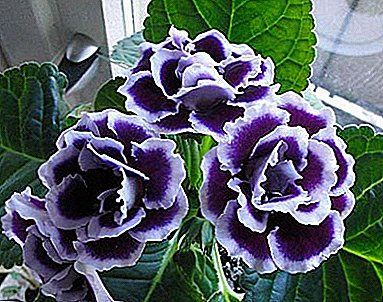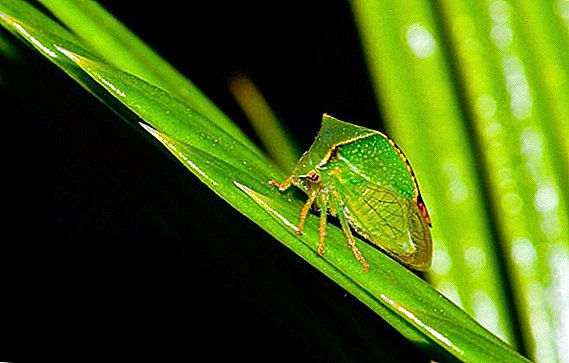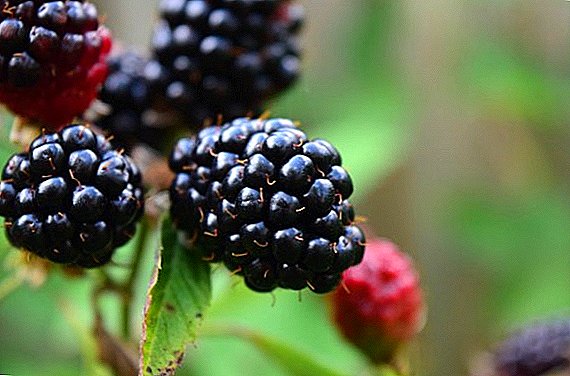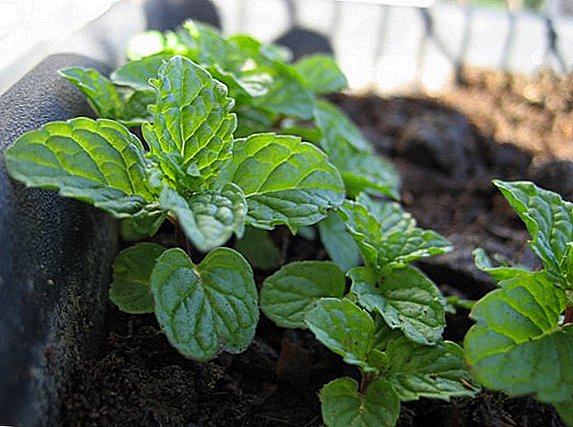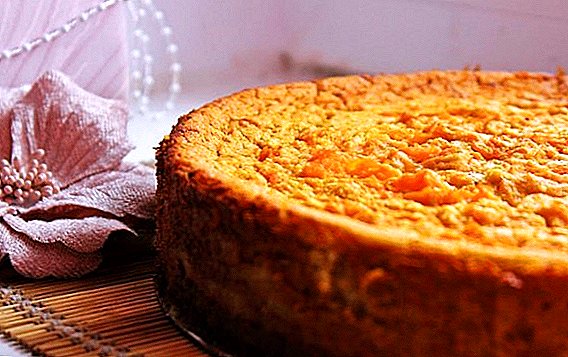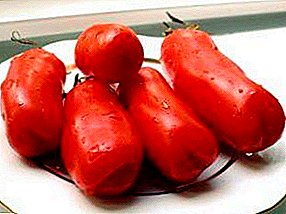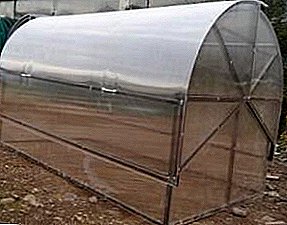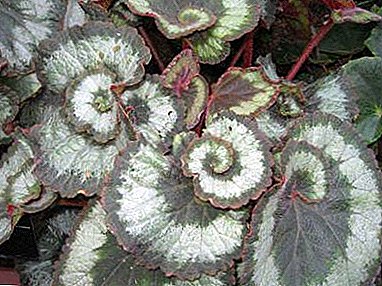
Griffith begonia refers to the decorative-foliated type. Culture has a spectacular appearance - leaves of unusual shape, unique color of flowers.
In order for the flower to feel comfortable at home, it is provided with proper care and prevention of diseases and pests.
How this plant looks and how to take care of it so that it pleases with its appearance will be described in detail in this article. Also here it is spoken about what diseases of this begonia can be encountered and what to do with it.
Botanical description and origin
The Latin name of the plant is Begonia Griffithii. Griffith begonia is characterized by an adjacent short stem up to 45 cm in length. The leaves are oval, slightly wavy at the ends, growing on long petioles. The color of the leaf plates is unusual: a reddish middle with a light green area, along the edges a wide silver edge. The flowers are large, pinkish pale.
Begonias discovered the French nerd and monk Plume. He gave the name to these plants in honor of M. Begon - the organizer of the expedition. Much time has passed since then. During this period, scientists have discovered many species, including the Griffith begonia. The birthplace of the flower is the Eastern Himalayas.
Appearance and features
 The height of the foliage culture reaches 30-50 cm. Stems are recumbent, short and thick. Characteristic features of the Griffith begonia houseplant:
The height of the foliage culture reaches 30-50 cm. Stems are recumbent, short and thick. Characteristic features of the Griffith begonia houseplant:
- The edges of the sheet plate are wavy or crenate.
- The lower part of the leaves and stems covered with hairs.
- Male and female flowers on stalks.
- In female flowers, a triangular seed box is formed above the petals.
The leaves are velvet and dense, egg-shaped, asymmetrical, covered with purple-red hairs.
Landing
Decorative leafy begonias are grown at home.
Lighting and location
It is necessary to have flowers in a moderately warm, sunny room.. Griffith begonia loves saturated ambient light, but can be in partial shade. Capacities with plants put on the southern or western windowsills. On the north window is not desirable to put. The culture should be protected from direct ultraviolet rays, so that the leaves do not get burned. The windows are curtained with a curtain or a cardboard box is installed, and a reflective film is glued.
What should be the ground?
Begonias are planted in loose and fertile soil with weak or neutral acidity. To prepare a good substrate is mixed in one part:
- Sand.
- Compost.
- Peat
- Turf and leaf land.
To the ground turned out moisture and air permeable, add perlite, coconut fiber and other leavening agents. To reduce acidity, charcoal is poured into the soil.
Pot
Capacity should be wide, but not deep. Material does not matter: plastic, glass or ceramics. Drainage holes must be made at the bottom of the pot to ensure air access to the roots and to drain excess fluid.
Planting rules
Drainage is poured at the bottom of the pot (fine gravel, expanded clay), and 2-3 cm of charcoal is poured on top. The seedling is placed in a pot and sprinkled with the prepared substrate. In order not to form voids, the soil is slightly tamped.
How to care?
Humidity
Since the Griffith begonia comes from the Himalayas, she prefers a wet microclimate. When the air is dry, a humid atmosphere is created by sprinkling the space around the plant. To increase the humidity of the air, apply another method:
- Laying clay or pebbles on the pallet.
- Put the pot on top.
- Periodically pour water.
Attention! Water leaves can not be irrigated.
Temperature
Griffith begonia loves heat, but does not tolerate strong temperature fluctuations. The optimal thermal regime for leafy culture in summer is + 22-25 degrees. In winter, at least +20 degrees.
Watering mode
 The plant does not tolerate stagnant moisture in the pot - the root system will begin to rot. Too dry soil is also not allowed. Rules irrigation begonias Griffith:
The plant does not tolerate stagnant moisture in the pot - the root system will begin to rot. Too dry soil is also not allowed. Rules irrigation begonias Griffith:
- Systematic moistening 3-4 times a week as the soil dries.
- In the heat, the multiplicity of irrigation increase.
- In the autumn and spring, moisture is reduced.
- Water for irrigation using only boiled or filtered. You can acidify a little.
The liquid should be at room temperature.
Fertilizer
Griffith begonia does not need additional feeding. The main condition for the supply of nutrients is planting and transplanting into fertile soil consisting of leafy ground, turf, peat and with the addition of pine needles and sand.
Specific care
Griffith begonia needs to be transplanted every year (in spring) into a larger tank. In a small pot, the culture loses its decorative appearance: the leaves begin to fade. Transplanted neatly, keeping the root ball.
After transplantation, pruning is carried out with a sharp knife (but not shears) to adjust the shape of the bush. Due to low light and low air humidity, the Griffith begonia from October to February is transferred to a state of rest.
Problems
Diseases
A culture can get sick from improper care.. Risky content of begonias on the balcony. Open air gives access to diseases and pests. During the period of growth of deciduous begonias the following problems arise:
- Yellowing of leaf plates due to excessive or insufficient moisture.
- The appearance on the leaves of gray plaque or brown spots. Solution: pruning of affected areas and fungicide treatment. Preventive measures: compliance with the airing mode, control of air humidification.
- Leaf fall due to lack of light.
- Formation of brown tips on leaves due to low humidity.
The most common diseases of begonias are:
- Gray rot. On the top of the plant, leaves appear gray watery spots. In the future, this leads to rotting and stalk breaking. Treatment: flower treatment Bordeaux liquid or copper-soap composition.
- Mealy dew. On the sheets are formed round spots with white bloom. To eliminate the problem using a solution of Fundazole.
- Bacterial and ring spots. Yellow green lines or spots appear on the plant.
Treatment spotting is not possible. It is recommended to destroy the infected plant in order to prevent the disease of others.
Pests
 Begonias infect insects: greenhouse aphid, soft shielding, greenhouse thrips and others. To control pests use in two ways: mechanical and chemical. The first is to collect insects when they are not very many. The second is the use of various decoctions and preparations for the destruction of harmful insects. Effective means of pest control are:
Begonias infect insects: greenhouse aphid, soft shielding, greenhouse thrips and others. To control pests use in two ways: mechanical and chemical. The first is to collect insects when they are not very many. The second is the use of various decoctions and preparations for the destruction of harmful insects. Effective means of pest control are:
- Fast
- Maksim.
- Topaz.
- Vectra.
- Fitosporin-M
The treatment of the plant with chemical preparations is carried out in a well-ventilated non-residential space or in the open air.
Breeding
Griffith begonia is bred in several ways: by seeds, by splitting bushes or rhizomes, by grafting, by a leaf or its parts.
Seeds are sown at the end of February in a special soil.. Planting material is pressed into the ground, but not powdered. Moisturize with a spray bottle and cover with glass or plastic. Boxes with seedlings put on the window sills. The room temperature is maintained at least 20 degrees. After 6 weeks, the sprouts dive into separate pots and keep in a lit place.
Split bush:
- The plant is removed from the pot.
- Cut off overgrown stems, large leaves and flower stalks.
- The roots are washed from the ground.
- The knife divides the shrub or root into fragments so that each part has a sprout or a bud.
- Poured the cut of coal.
- Place the planting material in the pot.
For propagation by cutting, the cutting is cut in 10 cm, the cuts are dried. A hole is made in the container with the substrate and a cutting is placed, deepened to the leaves.
To grow begonia from a leaf, choose a large healthy leaf. and cut it into several fragments. Each piece should be streaked. Parts of the leaves are placed in dishes with sand or soil. Cover with a plastic cover or film. Planting material is periodically moistened.
Also deserves special attention royal begonia, which has certain features of growing and care.
Thus, even an aspiring grower is able to grow Griffith's begonia. When comply with all the rules of care, light and heat, leafy culture pleases with its luxurious appearance.


